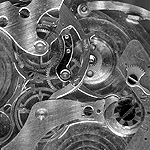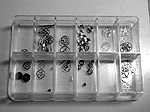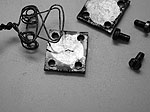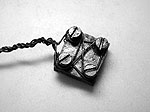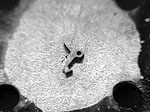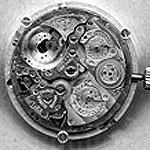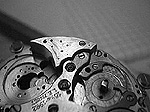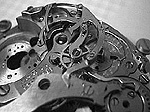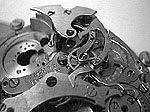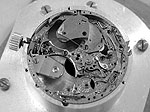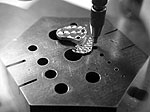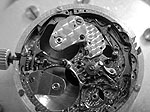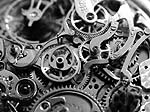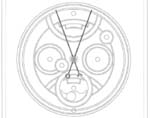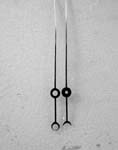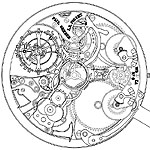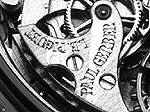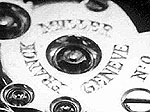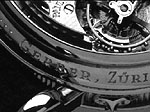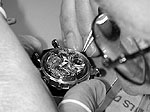3. A terrible cocktail: The 'three NO's' when working with this watch: NO plans, NO space, NO mistakes
Paul Gerber was not in an enviable situation when he accepted to start working on this watch: Sure, much reputation was to gain, and of course to work on such an exceptional movement represents a watchmaker's dream. But there are three challenges that really can make your life much harder:
-
no construction plans to start with,
-
no space to accommodate the requested complications, and
-
Finally, you work with a ‚piece unique', meaning: you cannot afford any mistakes.
This chapter will shed some light into the way Mr. Gerber dealt with these three circumstances.
You are a lucky watchmaker if your task is to modify a well documented movement: Take the technical data sheet, feed your CAD program with the data and develop your mechanism on the computer. Not necessarily easy, but a job that can be done.
But in this case, Mr. Gerber was confronted with a hundred year old movement. As I stated above, even a common watch was not serially produced after a strict specification table, and especially not such a complicated and rare piece. So what to do? The task Paul Gerber had before him required the help of CAD computer programs, so the only way out of this dilemma was to measure the cornerstones of the movement.
Basically, you fix your movement on a precisely movable table and decide on which point of your movement should serve you as a reference point, preferably an axle. All further points will be measured for their relative position to the reference point via a microscope and micrometric indicators. This is done with an old but highly precise coordinate plane-table called Hauser I, the use of which is very time-consuming. As an example, here the sub-seconds axle of a common Valjoux 7750 movement is viewed through the microscope:
Paul Gerber not only used computers for the design of the complications, he also employed modern CNC tooling machines to get the desired precision for the parts. After cutting out, the parts were of course tested and, after the master’s approval and fine finishing of course, found their place in the works. Here you see Paul Gerber working on his CNC machine:
No
space:
After the first step of the modification series was completed by Franck
Muller, the owner was in the possession of a beautiful, highly complicated
watch with elegant and classy case and dial, both of them finely hand-crafted
after his own wishes. So beautiful, of course, that he wished to keep
them. Beneath of the already difficult work Paul Gerber had to face 2
additional "complications":
- keep the dimensions of the watch
- place the indications to be added in a way that the existing dail can be used.
To meet these
demands, most unusual solutions were found. As you can easily see, the
jumping minute counter is placed concentrically with the small seconds
hand at the 6 o’clock position. The Power Reserve mechanisms found
their way onto the back of the movement.
The jumping minute counter mechanism is not only implemented as a small
mechanical delicacy (being more sophisticated and difficult to manufacture
than the common semi-instantaneous minute counter), but also as a measure
to place a Chronograph into a movement where there is no space reserved
for it. It is in some ways easier to transport mechanical energy via tiny
levers than with a series of wheels: smaller parts can be made, less space
is occupied and, in the end, less friction is produced as well.
The thinness of the clock-work also dictated the flat Split-seconds control
mechanism. The column wheel for the Split-Seconds is more an octagonal
rim wheel than a classic column wheel, an extremely clever and aesthetic
construction!
As you can imagine, much work with literature was necessary!
This is a tremendous weight on the watchmaker: if you make a mistake when modifying such a movement, it is gone for good. There is no 2nd try. Paul Gerber was well aware of this responsibility, and took every effort possible to ensure that the new mechanisms would only be added to the movement after thorough testing and evaluation. He counted not only on his experience, his calm and serene hands and his CAD drawing; he also did something that we know from the automotive industry: modeling and prototyping. He built whole (non-working) movement plates from scratch to test the chronograph mechanism before modifying the movement (which was the first step that could not be reversed). Here such a construction plate is shown:
The next chapter invites you to a journey into the mechanical marvels inside the movement. Of course this a fairly technical part, but I think this unique piece deserves to be presented in detail. Therefore, may I ask you to follow me and our technical assistant John Davis to the next chapter?












